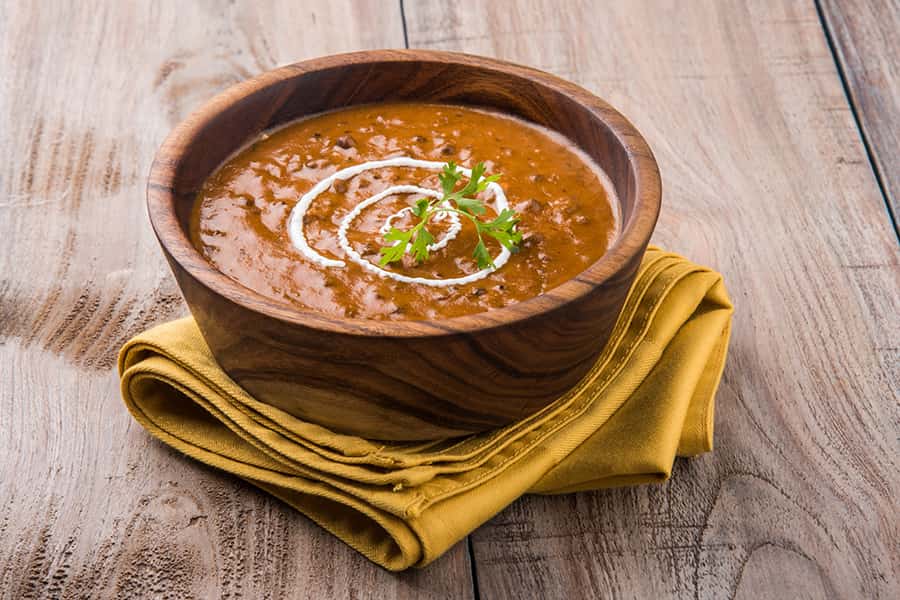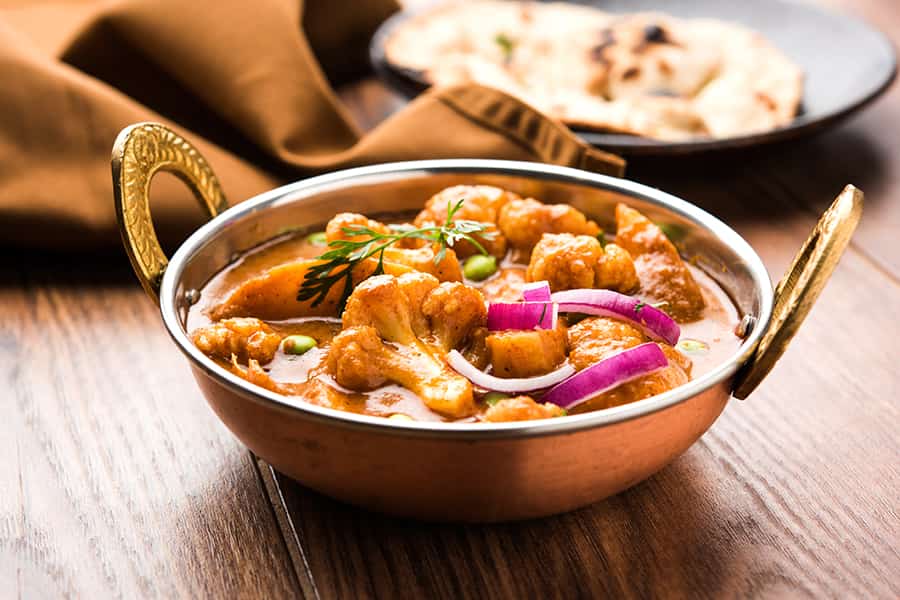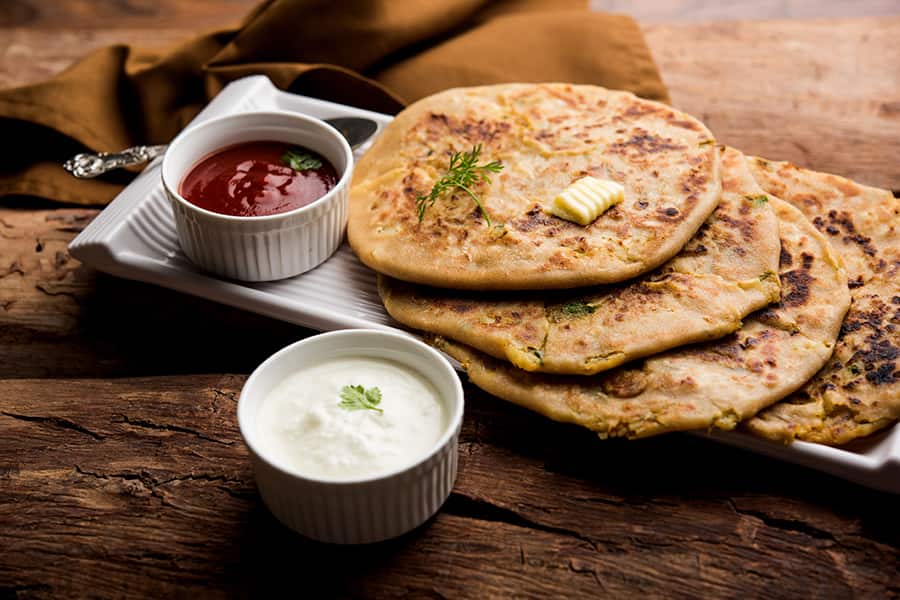- Home
- Leisure & Lifestyle
- Food & Drink
- 9 authentic and easy Indian recipes to try at home
It’s no secret that in the UK, we love Indian food. Chicken tikka masala has been described as our national dish, and there are few people who don’t look forward to an Indian takeaway on a Friday night, or meal at their local curry house. But no matter how much you may love a tikka masala, traditional Indian cuisine can look quite different.
Authentic Indian food is extremely diverse, and there are plenty of popular recipes that many people in the UK have never heard of. So if you’re looking to make some delicious, authentic, yet easy, Indian food at home, where should you start? Here are nine recipes to inspire you.
1. Dal makhani

If you love Indian food, you’ll probably have tried dal before – and tarka dal is a staple at most Indian restaurants. But dals can vary enormously, and each Indian state has their own favourite dal recipe. While some dals, like tarka dal, are pretty simple, others are much more luxurious.
Many would argue that the most decadent dal of all has got to be dal makhani. Dal makhani was created by New Delhi chef Kundan Lal Jaggi, and this soup-like dal is usually only eaten in India during celebrations or parties. But if you’re looking to see just how extraordinary the humble lentil can taste, there’s no better dish to make at home.
Makhani means “buttery” in Hindi, which gives you an idea of how rich and creamy this Indian recipe tastes – and offers some explanation as to why it’s usually only eaten on special occasions!
To make dal makhani, you’ll need to cook whole black lentils with lots of butter, cream, or ghee, and when it comes to adding the usual spices, less is more in this case; fresh onion, ginger, garlic, tomato puree, and garam masala go a long way in this dish. Red kidney beans are often added to the dish too, and once the dal is ready, it’s absolutely delicious served with garlic naan.
Try this authentic recipe by Cook With Manali or watch the video below.
2. Masala dosa

South Indian food is markedly different from North Indian cuisine, and one of the region’s most famous dishes is definitely the masala dosa. Essentially an Indian pancake, masala dosas are usually eaten for breakfast or as a snack, and most South Indian households regularly make dosas. Making your own restaurant-quality dosas may take a few attempts, but it’s definitely worth the effort!
Unlike western pancakes, dosas are both gluten-free and dairy-free; the batter is made from lentils and rice that have been soaked until soft and then blended together, which results in a creamy, smooth mix. The batter is then fermented overnight which gives the dosa a lovely tangy flavour and a light, fluffy texture. Once ready, the batter is spooned onto a hot griddle pan and cooked until crisp.
Traditionally, dosas are usually served with chutney and sambar – a South Indian stew made with lentils, vegetables, tamarind and herbs – but you can eat them with whatever ingredients you like. Veggies like peas, carrots, cauliflower and green beans all work well, as does paneer cheese and your favourite sauce or chutney.
To make masala dosas, try this recipe by Veg Recipes of India, or watch the video below.
3. Gavthi chicken curry

If you love chicken curry, why not try making gavthi curry, which is also known as Maharashtrian chicken curry?
Maharashtra is a state located in western India, and this curry is commonly made in the villages and hamlets of this region (“gavthi” means village). Though this is a fairly simple, rustic dish, it has a wonderfully deep flavour – and using chicken with the bone still in adds more richness.
Like many Indian curries, making a masala is the first step. A masala is a blend of spices that are usually mixed with onions, ground into a paste, and then fried to enhance the flavours. The types of spices used in this dish vary from village to village. But coriander and cumin seeds, garam masala, bay leaves, fennel seeds, and poppy and sesame seeds are almost always included.
To make gavthi chicken curry, you first need to marinate the chicken in ginger, garlic, turmeric, and chilli, then cook up the spice paste, add the chicken and cook. You can make this dish as spicy or as mild as you like (though fiery is more authentic!), and if you prefer a hint of creamy flavours, you can add extra coconut milk. Serve with white rice, or mop up the sauce with naan bread.
To make gavthi chicken curry, try this recipe from Flavours Of My Kitchen, or watch the video below.
4. Brinjal curry

Hinduism is the largest religion in India, and most Hindus are vegetarian – so Indian cuisine is excellent for vegetarians, and many popular dishes are made from lentils, chickpeas, or vegetables.
One of the most commonly eaten veggie curries in India is brinjal curry; a delicious and healthy curry that’s made with aubergine, onions, tomatoes, herbs, and spices.
Traditionally, the aubergine is fried or roasted until tender, then simmered slowly in a deeply flavoursome sauce until it collapses and absorbs all the flavours. Smaller aubergine is best for this dish; larger ones tend to be spongy and don’t break down as well, plus smaller ones taste more buttery and add richness to the dish.
There are many types of brinjal curries, but for a deliciously creamy recipe, make sure you add coconut milk, like the traditional Keralan recipe. This brings out the spicy flavours of the green chillies and red chilli powder while balancing the dish at the same time. Serve with white rice or flatbreads like naan or roti.
To make authentic brinjal curry, try this recipe from Archana’s Kitchen, or watch the video below.
5. Chaat

If you’re a fan of street food, you might be interested in making one of India’s most beloved snacks: chaat. Though chaat was created by Delhi street food vendors, it’s become popular all over the country, and today chaat isn’t a single dish but an umbrella term for a variety of snacks that have one thing in common: they’re all wonderfully salty, sweet, sour, tangy, spicy, and crunchy.
The name chaat comes from three Hindi words which mean “a delicacy”, “to lick one’s fingers” and to “devour with relish” – and if you make your own chaat, there’s a good chance you’ll be doing all three! Though there are countless varieties of chaat, the most authentic recipes include diced potato, crispy fried bread, and chickpeas topped with coriander, yoghurt, ginger, and tamarind sauce.
Whatever chaat recipe you decide to make, it should have the following components: a carby base like a samosa, crisp fried rice, or fried bread fritters; a spicy/sweet sauce (usually a chutney); a crunch, usually from crispy fried potato bits; vegetables like onions, tomatoes and potatoes; and an umami hit from chaat masala.
To make your own chaat, try this recipe from Swasthi’s Recipes, or watch the video below to find out more about different types of chaat.
6. Aloo matar

One of the most popular curries in India’s Punjab region is aloo matar; a spicy tomato and pea curry that’s perfect for a quick, healthy, and budget-friendly weeknight dinner.
The sauce is delightfully spicy and creamy, and because whole spices are dry roasted in a pan before being cooked in oil, each ingredient is infused with the aromatic flavours of cinnamon, clove, and cardamom.
When you combine these warming flavours with comforting potatoes and wholesome peas, this becomes the ideal winter dinner. Once you’ve cooked the spices, just blend tomatoes, garlic, ginger, and onion until you have a smooth paste, then add to the pan. Stir until the sauce becomes glossy, then add the peas, potatoes, and water.
Simmer until the potatoes are tender (usually around 20 minutes), then add some garam masala and fresh coriander leaves. Try the sauce; if it’s too spicy for your liking, you can add cream or coconut milk to add a milder, creamy taste. Serve with roti, paratha, or naan so you can mop up all the delicious sauce at the bottom of your bowl!
To make aloo matar, try this recipe from Veg Recipes of India, or watch the video below.
7. Keralan fish curry

Kerala is a state on the Southwest coast of India, and its distinct cooking style reflects its balmy, tropical climate. The curries here combine the smoky, punchy flavours of cumin and fenugreek with the sweetness of cinnamon and cardamom and the creaminess of coconut – and the result is a mouthwateringly flavoursome dish.
One of the most famous Kerala curries of all is fish curry. While traditionally this dish is usually made with kingfish, this can be hard to find in the UK. Instead, you can use any other meaty fish like cod, pollock, sea bass, hake, mackerel, monkfish, or haddock. The key to a great Keralan fish curry is the sauce itself, not which fish you use – so it’s a good idea to look for less popular fish that’s sustainably caught.
While Keralan fish curry doesn’t usually contain vegetables other than the tomatoes and onions that are used in the curry paste, you might want to add a few extra vegetables for a boost of veggies, and to make the curry go further; green beans, sugar snap peas, and mangetout all work well. Serve with steamed rice and raita yoghurt dip.
To make authentic Keralan fish curry, try this recipe by Maunika Gowardhan, or watch the video below.
8. Saag paneer

Saag paneer is one of the most common dishes on Indian menus. But despite the belief that it’s always made with spinach, it’s actually made with any leafy greens, from kale to mustard greens – and it’s palak paneer that’s made only with spinach. In India, the two dishes are interchangeable, and the leaves used depend on what’s at hand (spinach was introduced to India later than the locally-grown mustard greens).
Whether you decide to use spinach or another leafy green, making saag paneer is a great way to boost your health, as these vegetables contain potassium, which can lower blood pressure; fibre, which can lower cholesterol; and folate, which can protect against heart disease and stroke. Plus, veg like spinach are packed with vitamins – and because this dish is so tasty, you won’t feel bad for having seconds.
Paneer cheese is the perfect accompaniment for this dish. It has a spongy texture and a creamy, mild taste, and when paired with the saag and garlic, ginger and cumin, it’s a match made in heaven. If you don’t eat dairy, you can just swap paneer for tofu, as the textures and subtle taste are very similar, and both give the dish a satisfying protein boost.
To make authentic saag paneer, try this recipe by Asma Khan, or watch the video below.
9. Aloo paratha

If you want to enjoy the delicious flavours of Indian food but don’t fancy making anything complex, why not make a stuffed paratha?
Whereas the dosa is popular in South India, in North India it’s the paratha that’s everywhere – and unlike dosas, parathas are pretty quick and simple to make. Usually eaten for breakfast, stuffed parathas also make a great lunch or hearty snack.
You can stuff your parathas with whatever you like – meat, veg, cheese – but spiced mashed potato is most common (aloo paratha). So if you have any leftover mashed potato and want to knock up a quick meal, it’s the perfect comfort food!
The parathas themselves are made from flour, water, and salt and the dough takes minutes to make – so as long as you have some spices at home, this is an Indian dish you can make without having to go to the shops.
You can add whatever spices you like to the potato, but cumin, chilli, garam masala, and coriander are usually used. If you have fresh coriander and chilli, adding that gives a fresh, zingy hit.
Once you’ve rolled out your dough, spoon the potato into the centre, then wrap the sides up so it’s enclosed. Roll it out gently so the stuffing doesn’t come out, then fry for a few minutes. Crisp on the outside, soft and fluffy on the inside, each bite of a stuffed paratha is a joy! Serve with pickle and yoghurt.
To make authentic aloo paratha, follow this recipe by Cook With Manali, or watch the video below.
Final thoughts…
If you love Indian food, the good news is that the dishes on offer at your local Indian restaurant are just the tip of the iceberg. Indian cuisine is – just like India itself – incredibly diverse, and if you’ve ever travelled in India, you’ll probably know how much the food changes as you move across the country. You’ll also probably be aware of how incredibly tasty the street food is!
So whether you want to make an Indian classic like saag paneer, make a local village-style chicken curry, or have a go at making a satisfying flatbread, hopefully there’s an Indian recipe to suit every palate here.
One of the many great things about Indian food is that the spices are very adaptable, so if you’re not great with handling spicy food, you can easily make a milder alternative.
Have you made any of these Indian dishes before? Or do you have any of your own favourite Indian recipes you’d like to share with our readers? We’d love to hear about your culinary adventures in the comments below.
Selene Nelson is an author, freelance journalist, and lifestyle writer for Rest Less. After graduating from the University of Sussex with a degree in English Literature, Selene began contributing to many major newspapers and websites, and has written for the BBC, The Sunday Times, The Independent, Town & Country, and HuffPost. Her specialist subjects include food, travel, and health, though she enjoys writing about a wide range of topics (e.g. her two books are about veganism and psychopathy, respectively!). She enjoys cooking (particularly pasta and Asian noodle soups), reading, travelling, hiking, attempting to keep fit, and watching animal videos on YouTube.
* Links with an * by them are affiliate links which help Rest Less stay free to use as they can result in a payment or benefit to us. You can read more on how we make money here.
Quality wines from just £6.25 per bottle
The Wine Society is one of the UK’s leading wine merchants. A one time payment of just £40 gets you lifetime access to The Wine Society, unlocking access to honestly priced, world-beating wines. Plus, free, next day delivery on all orders with £20 off your first order. T&Cs** apply.
**If your order is for a gift, the recipient must be over 18 years. By placing your order, you confirm that the recipient is over 18 years old.
